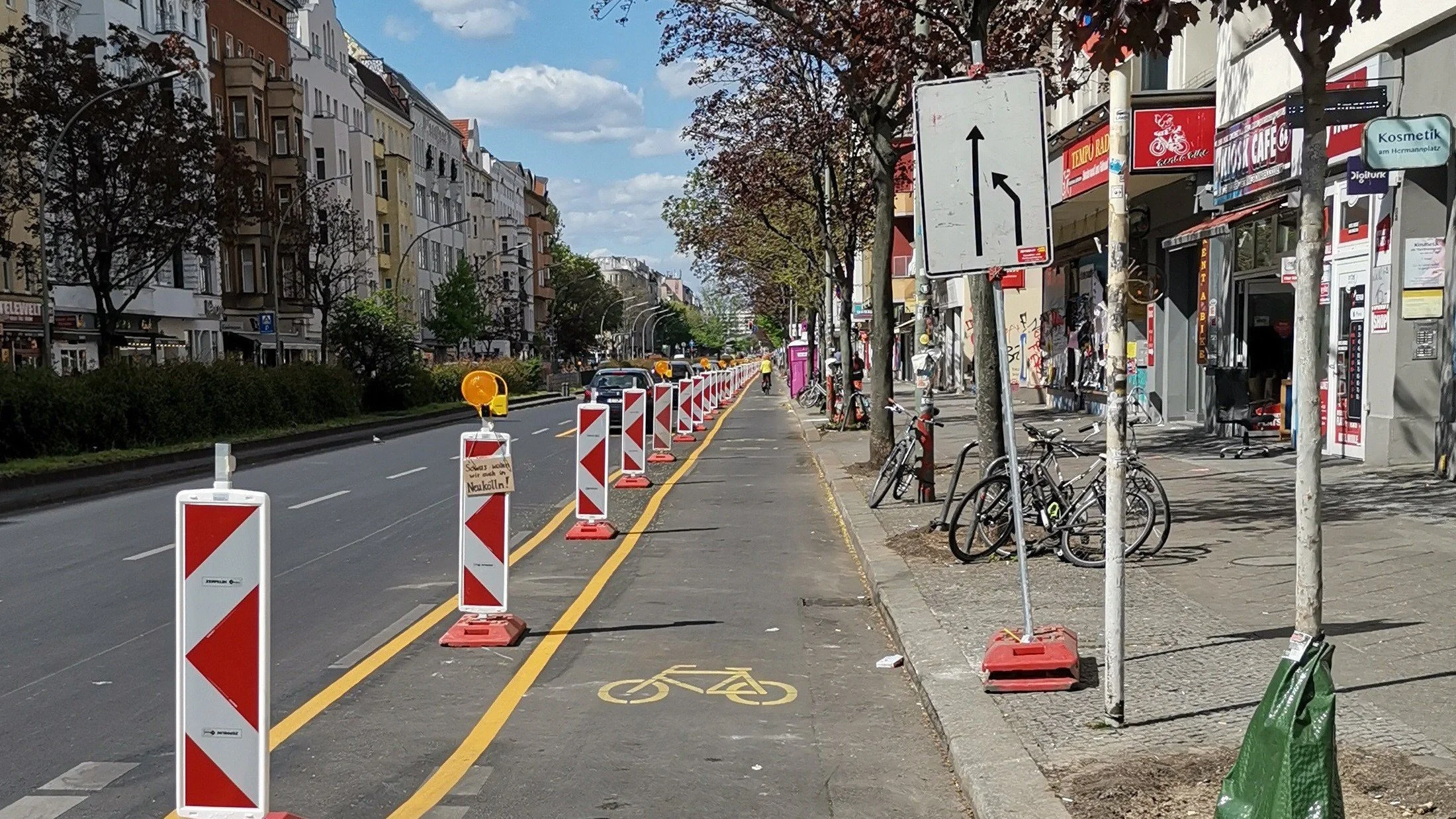What are sharrows worth?
No cone at new buffered bike lane, 19th St and Harrison, Oakland pic.twitter.com/58Q88n84Ah
— FTFYOakland (@FtfyOakland) November 6, 2016
If you ride a bike with any frequency, you've probably, at some point, encountered a sharrow. That's when a bike+arrow symbol is painted onto a standard street or road to indicate that cyclists should travel there.
A recent article from Momentum Mag highlights a new study out of Chicago that demonstrates the useless nature of sharrows:
Sharrows are what cities install when they want to appear as though they care about bicycling, but can’t or don’t want to muster the political will to actually change anything significant in its favor.
It has long been assumed by bike advocates and everyday riders that sharrows do very little, if anything, to increase road safety for people on bikes. As it turns out, those assumptions were correct.
A recent study undertaken by University of Colorado Denver researchers Nick Ferenchak and Wesley Marshall examined safety outcomes for areas of Chicago that received bike lanes, sharrows, or no bicycling infrastructure at all. The study was conducted before Chicago had much in the way of protected bike lanes, so in this case no distinction was made between types of bike lanes. The study concluded that, while bike lanes encourage more people to ride and lead to increased safety for people on bikes, sharrows do neither.
After placement of single cone, lower speeds & zero encroachment into new buffered bike lane at Madison/Harrison/19th Street in Oakland pic.twitter.com/Jjg8FWrVlQ
— FTFYOakland (@FtfyOakland) November 6, 2016
In a comparison between areas in Chicago with bikes lanes, sharrows, and no bike infrastructure, the sharrows actually performed worse than the streets with no bike infrastructure at all:
They found that rates of cycling more than doubled in areas where new bike lanes were added, compared to only a 27 percent increase in areas where sharrows were added. Interestingly, there was a 43 percent increase in areas where nothing changed. In areas where new bike lanes were added, the rates of injuries to people on bikes decreased 42 percent, compared to only a 20 percent reduction in areas with sharrows, which was worse than the 36 percent reduction in areas where nothing was changed.
The article's author hypothesizes that this difference in injury rate is a result of the perceived but false safety of sharrows. In other words, the sharrows may be encouraging people to bike on a street they otherwise would have avoided; It's a big sign saying "Please bike here" but it's really nothing more than a sign.
As the article concludes, "This most recent study basically confirms what is quite easy to feel when you’re out in the sharrows on your bike."
When we think about bikeability in our cities and towns, I think we should focus on building up the three key components of a safe, accessible bike network: protected bike lanes, off-road trails and quiet, slow-moving residential streets. Let's not waste paint on harmful sharrows.
And now let me take a moment to share two hilariously awesome tweets on the topic of sharrows from one of my favorite twitter accounts, @BicycleLobby. (See all the Strong Towns staff's favorite twitter accounts here.)
You city's transportation planner looking over a map of where to paint sharrows. pic.twitter.com/NHuXZLBWem
— Bicycle Lobby (@BicycleLobby) August 12, 2016
That look when you're worried your city is going to install sharrows instead of a protected bike lane. pic.twitter.com/1S6L6L3QDL
— Bicycle Lobby (@BicycleLobby) October 31, 2016
(Top photo by Eric Fischer. Thanks to People for Bikes for sharing the twitter videos.)



Biking advocates often argue that cities should add bike infrastructure because it'll reduce congestion. Reality is harder to predict. Here's why you should shift away from reducing congestion arguments and what you could focus on instead.